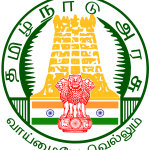Tamil Nadu Minister for Finance and Human Resources Management P. T. R. Palanivel Thiagarajan published the White Paper on the state’s finances to the public on August 9, 2021.
Addressing the public, the minister said the worsening deficit situation has led the state to be over-reliant on debts. The public debt is Rs 2,63,976 per family in Tamil Nadu. The minister said that total revenue receipts of Tamil Nadu have declined to 8.7% of GSDP in 2020-21 from the peak 13.35% of GSDP in 2008-09. State’s Own Tax Revenues (SOTR) has declined from 11.46% between 2006 and 2011 to 4.32% between 2016 and 2021. “Zero Budget is beneficial only for financially empowered”, he said.
TN Finance Minister said grants in aids increased from 8.13% in 2006-07 to 17.10% of revenue receipts in 2020-21 which undermines the financial independence and federalism. “Tamil Nadu lost Rs 2,577 crores because of not conducting local bodies’ election, he said.
The accumulated loss of the State Transport Undertakings (STU) in 200-2021 is Rs. 42,143.69 crores, which was Rs. 871.69 crores in 2011-12. “STUs are making a loss of Rs 59.15 for every kms operated,” the state finance minister said. He added that the deterioration in the finances of Tamil Nadu in the past seven years will be reformed in the next five years.
Noting that from a revenue surplus of ₹1,760 crore in 2012-13, he said the fiscal balance had worsened and a revenue deficit of ₹1,789 crore was recorded in 2013-14 that grew almost four times to ₹6,408 crore in 2014-15. It further deteriorated to ₹35,909 crore in 2019-20 even before the Covid-19 pandemic struck, he said.
The Finance Minister said the State’s revenue deficit as a percentage of GSDP had risen from 0.18% in 2013-14 to 3.16% in 2020-21, more than the entire normally permissible fiscal deficit.
Mr. Thiaga Rajan said the current level of fiscal deficit was unsustainable primarily because a portion of the fiscal deficit was to fund the revenue deficit. “Since the year 2017-18, the share of revenue deficit in fiscal deficit has shown a substantial jump to 50 per cent or more. Hence the borrowings of the Government are not contributing towards capital expenditure but are instead being utilised for current expenditure,” he said.
The Finance Minister further said that Tamil Nadu had the third highest guarantees outstanding among all States after Telangana and Andhra Pradesh. While the overall guarantees provided by the Government of Tamil Nadu in 2006-07 was ₹3,960.09 crore, it had ballooned to Rs. 53,697 crore in 2014-15 mainly due to large increases in guarantees to the power sector, which started declining after the UDAY scheme was implemented.
However, the guarantees have risen again due to the adverse financial situation in 2020-21 in the power and transport sectors and stand at ₹91,818.44 crore. Of this, ₹82,916.90 crore was due to the power sector. The guarantee for the transport sector which was ₹4.25 crore in 2018-19, now stands at ₹4642.72 crore at the end of 2020-21. These guarantees represent a large contingent liability for the State government, he said.
Mr. Thiaga Rajan said Tamil Nadu also had the dubious distinction of currently being the largest borrower in the open market amongst all States in the country.

Decline in State’s Own Tax Revenues:
Tamil Nadu Revenue Receipts as a percentage of Gross State Domestic Product (GSDP) too has declined since seeing a high of 13.35% in 2008-09 to 8.70% in 2020-21. This has largely been driven by a decline in the growth rate of the State’s Own Tax Revenue (SOTR). While the SOTR stood at Rs. 27,221.15 crore in 2006-07, indicating a 67.88% share to the Total Revenue Receipts (TRR) of the State, it stood at Rs. 1,06,171.70 crore, a 62.82% share to the TRR in 2020-21.
“The SOTR as a proportion of GSDP has been declining each year reaching 6.40% in 2017-18 and 5.82% in 2019-20 and finally just 5.46% in 2020-21. This is a source of grave concern,” he said.
He said although in 2020-21, the SOTR to GSDP ratio had declined due to the Covid-19 pandemic, there were two major areas of concern — the consistent decline in the SOTR to GSDP ratio ever since 2011-12 and the sharp decline in the average tax to GSDP ratio from 2011-12 to 2018-19.
The overall decline by almost 3% of the SOTR to the GSDP ratio was very disturbing as at current GSDP levels, it amounted to ₹60,000 crore of revenue foregone during 2020-21.
Subsidies:
Subsidies amounted 12.65 per cent (Rs 4841.80 crores) of revenue expenditure and 1.48 per cent of GSDP in 2006-07. This has increased to 27.06 per cent (Rs 62,338.84 crores) of Revenue Expenditure and 3.21 per cent of GSDP in 2020-21.
Power subsidy is the highest at 1.10 per cent of GSDP.
Food subsidy- 0.49 per cent of GSDP
Transport subsidy- 0.19 per cent of GSDP
Key highlights of White paper on Tamil Nadu Finances:
Tamil Nadu’s debt outstanding of about Rs. 5.7 lakh crore projected as of March 31, 2022, amounts to around Rs. 70,000 burden on every citizen of the State.
Debt per citizen (including debt, operating loss of Transport Corporation, Electricity Department, interest payment)- Rs. 1.10 lakh per citizen
Tamil Nadu has been in revenue deficit since 2013-14, leading to higher fiscal deficits
The current level of fiscal deficit is unsustainable, because the share of revenue deficit in fiscal deficit exceeds 50% or more since 2017-18
On every unit of power consumption, Tangedco losses Rs. 2.36 per unit
Accumulated debt of power and transport sector alone Rs. 1.99 lakh crore as on 31.3.2021
Accumulated losses of the two water sector boards amount to Rs. 5282.57 crore as on March 31, 2021
The average cost per kilometre incurred by all State Transport Undertakings works out to Rs. 96.75, with a loss of Rs.59.15 per km operated
Operational cost of Chennai Metropolitan Water Supply and Sewerage Board is about Rs. 36.58 per kilo litre, while cost of recovery is only Rs. 14.08 per kilo litre




